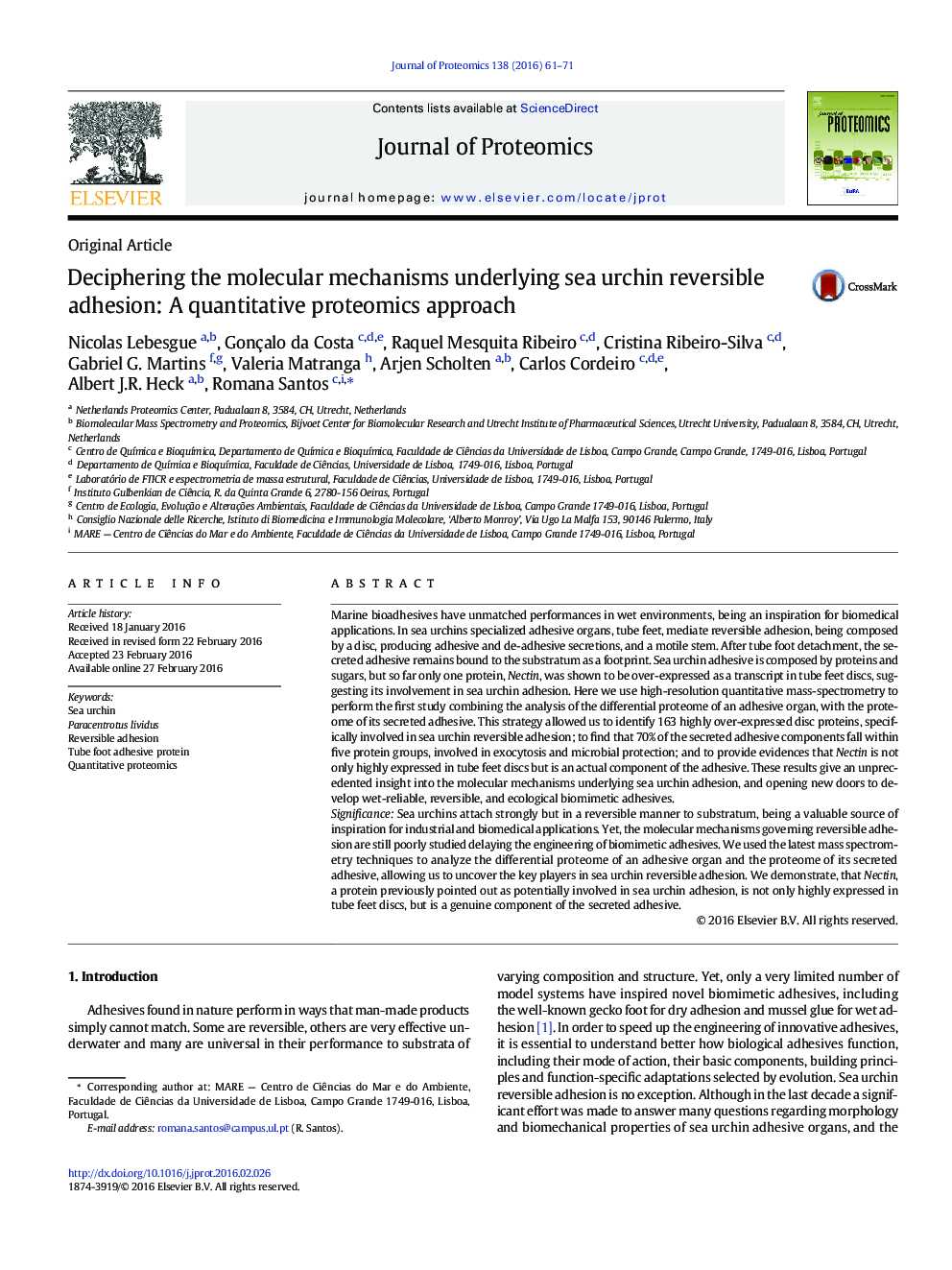| کد مقاله | کد نشریه | سال انتشار | مقاله انگلیسی | نسخه تمام متن |
|---|---|---|---|---|
| 1225293 | 1494743 | 2016 | 11 صفحه PDF | دانلود رایگان |
• Tube feet differential proteome and the secreted adhesive proteome were analyzed.
• 163 highly over-expressed disc proteins were identified.
• 70% of the adhesive proteome is related with exocytosis and microbial protection.
• Evidences are provided that Nectin is a sea urchin tube foot adhesive protein.
• This study proposes the first molecular model for sea urchin reversible adhesion.
Marine bioadhesives have unmatched performances in wet environments, being an inspiration for biomedical applications. In sea urchins specialized adhesive organs, tube feet, mediate reversible adhesion, being composed by a disc, producing adhesive and de-adhesive secretions, and a motile stem. After tube foot detachment, the secreted adhesive remains bound to the substratum as a footprint. Sea urchin adhesive is composed by proteins and sugars, but so far only one protein, Nectin, was shown to be over-expressed as a transcript in tube feet discs, suggesting its involvement in sea urchin adhesion. Here we use high-resolution quantitative mass-spectrometry to perform the first study combining the analysis of the differential proteome of an adhesive organ, with the proteome of its secreted adhesive. This strategy allowed us to identify 163 highly over-expressed disc proteins, specifically involved in sea urchin reversible adhesion; to find that 70% of the secreted adhesive components fall within five protein groups, involved in exocytosis and microbial protection; and to provide evidences that Nectin is not only highly expressed in tube feet discs but is an actual component of the adhesive. These results give an unprecedented insight into the molecular mechanisms underlying sea urchin adhesion, and opening new doors to develop wet-reliable, reversible, and ecological biomimetic adhesives.SignificanceSea urchins attach strongly but in a reversible manner to substratum, being a valuable source of inspiration for industrial and biomedical applications. Yet, the molecular mechanisms governing reversible adhesion are still poorly studied delaying the engineering of biomimetic adhesives. We used the latest mass spectrometry techniques to analyze the differential proteome of an adhesive organ and the proteome of its secreted adhesive, allowing us to uncover the key players in sea urchin reversible adhesion. We demonstrate, that Nectin, a protein previously pointed out as potentially involved in sea urchin adhesion, is not only highly expressed in tube feet discs, but is a genuine component of the secreted adhesive.
Figure optionsDownload high-quality image (123 K)Download as PowerPoint slide
Journal: Journal of Proteomics - Volume 138, 14 April 2016, Pages 61–71
